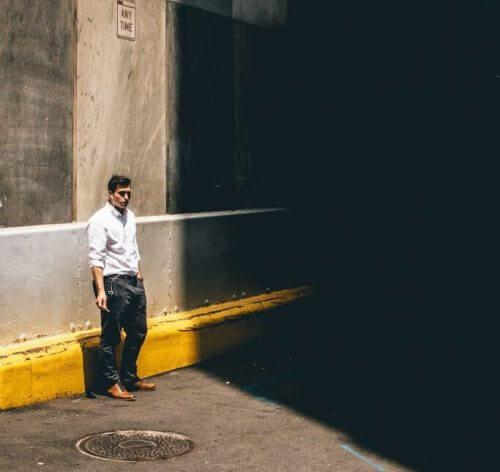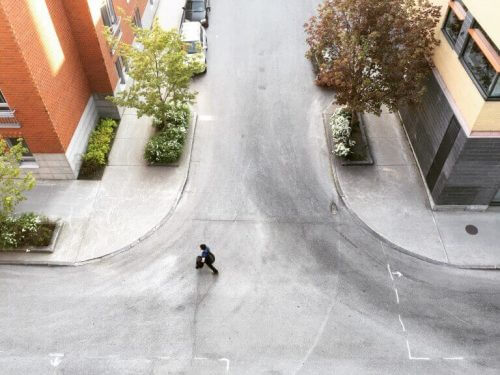hot? Don't just blame the sun: the lack of shade and wind and the abundance of asphalt and concrete surfaces are among the factors that increase the heat load

By Alina Arbitman, Angle, Science and Environment News Agency
hot. very hot. Anyone who didn't shut himself up in an air-conditioned bubble thatemitting more heat to the environment In the last months he could feel it himself.
It's not just that we feel that every summer is harder than the previous one. These feelings have scientific validity. The earth is warming וLast July, the highest temperatures ever recorded in the USA, since measurements began there in 1895. Also in Israel, The month of July was one of the hottest recorded. But is the air temperature solely responsible for the heat load we feel, or are there other factors that make us suffer so much?
"Global warming of one or two degrees by itself does not significantly affect the heat load, but in the urban environment for example, combined with the lack of shade, wind blocking from buildings and proximity to heat emitting surfaces (such as concrete or asphalt), this increase will actually translate into an increase of 15 degrees or more" , says Ariel Freundlich from Afava College and Givat Washington College. "So, for example, staying in the sun at an air temperature of 30 degrees, in the absence of wind and with proximity to surfaces that emit heat, will actually be accompanied by a sensation of 45 to 55 degrees."
Humans belong to the group of warm-blooded animals, which always maintain a constant body temperature - in our case, around 36.6 degrees Celsius. This is not always an easy task for our body. In situations of heat stress, for example, the body will activate various heat control mechanisms to cool itself: the expansion of peripheral blood vessels, lowering blood concentration and sweating, while in cases of cold stress, the body will warm itself by contracting the muscles and chills and prevent heat loss by constricting Peripheral blood vessels. The state in which the body does not have to exert effort to maintain the temperature (that is, when the temperature control mechanisms are at a minimum activity) is called "thermal comfort".
"The meteorological service publishes an index that shows whether there is a light, medium or heavy heat load, but this index may be misleading, because it only considers temperature and humidity, and ignores shade and wind," Freundlich explains. "When a heavy heat load is reported, the IDF stops training, the Ministry of Education stops the trips and the Ministry of Tourism issues a warning to tourists, but all those activities take place in outdoor conditions, for which shade and wind are very relevant. Thus, for example, in the Israeli summer it is difficult for a person to be in the sun for more than fifteen minutes, on the other hand, under identical conditions of temperature and humidity, but in the shade, you can stay and feel good.'
Thanks to the shadow and the wind
Freundlich decided to investigate how different climatic factors affect the thermal load in outdoor conditions at several sites in Israel and also to find out which factors have a decisive effect on it. in research, which was introduced At the 2017 Annual Science and Environment Conference, Freundlich used the RayMan model (developed by Prof. Andias Matzerakis from the University of Freiburg, Germany) for thermal load, based on temperature and humidity averages for the various sites as well as radiation, shading and wind simulations. The study examined different wind speeds as well as different shade conditions: full sun, partial shade (a single tree or a shed, which blocks the direct sunlight but allows some of the scattered radiation to penetrate) and full shade (a wide roof or a dense canopy of trees, which block the direct radiation and most the scattered radiation). The sites examined were Nazareth, Caesarea, Jerusalem, Tel Aviv, Mitzpe Ramon, the Dead Sea and Eilat.
The research findings show that shading dramatically reduces the thermal load - up to about 50 percent. Thus, in Tel Aviv, for example, the average annual temperature is 22.8 degrees, but the value of the thermal index according to the model was 45.8 degrees in full sun conditions, 32.1 degrees in partial shade conditions, and only 24.1 degrees in full shade conditions. That is, moving from full sun conditions in Tel Aviv to partial shade conditions, reduces the thermal load by about 14 degrees (a reduction of about 30 percent in the thermal load). In full shade conditions the reduction is even more dramatic: 21.7 degrees (a reduction of about 47 percent in the heat load).
The study also found that the wind has an even more significant effect - it turns out that it can reduce the thermal load by up to 63 percent. The explanation for such a dramatic effect is that the wind cools the person both directly - by transporting heat and increasing the evaporation of perspiration, and indirectly - by cooling the environment (through convection), resulting in a reduction in the intensity of the long-wave radiation that the environment emits. It was also found that wind blurs the differences in the thermal load between sun and shade, in other words, when there is wind the difference between staying in the sun and staying in the shade is less noticeable.
where do you stand

When it comes to the thermal load, the surface you stand on is also of great importance. The difference between a black asphalt surface that absorbs the radiation, heats up and then releases it to the environment and a white surface that reflects part of the radiation, and thus heats up much less, may be expressed in a reduction of close to 30 percent in the thermal load. "My research even makes it possible to examine how weighing all the factors together - wind, shade and reflection from surfaces - eases the thermal load," says Freundlich. Indeed, it turns out that the combined effect can, under certain conditions, lead to a reduction of close to 70 percent in the thermal load.
The research conclusions, which are very relevant to the urban environment, offer the possibility of easing the heat load in our environment. So what can actually be done? Add shading, plant vegetation, reduce the use of built surfaces and materials with high heat capacity, plan the built environment taking into account the wind flow and even re-examine the policy of building high in cities.
"It's no secret that in hot Israel there are not enough shaded areas, both in the urban environment, in public parks for example, and in tourist sites, as if we were in Northern Europe," says Freundlich. But if shading is a matter that can be handled relatively easily, what do you do with wind that is much less predictable than the sun? "The wind is indeed considered a chaotic factor, but in fact its flow can be shaped," says Freundlich. "In the summer, for example, the wind in Israel is from the west to the northwest. Therefore, by planning streets in an east-west direction, the wind can be channeled into the street and thus ensure cooler conditions in the hot season.'
"In any new construction project, the local effect it will create on the heat load due to the expected wind blocking must be taken into account," suggests Freundlich. "This is a factor that today's city planners are not aware of and do not take into account in the planning process. In Tel Aviv, for example, the tall construction near the beach blocked the breeze from the sea to the streets behind it. In this case it is an irreversible problem, but at least it is possible to avoid repeating the mistake in areas where construction is currently being done near the coast - in Netanya, in Makmurut, in the Haifa area or in Ashkelon.'
And what about the materials used in the new construction? "In the urban environment, which at its worst suffers from many heat-emitting factors, including asphalt roads, cars, electrical appliances, factories, and more, the use of asphalt and concrete should be reduced - in public gardens, for example - and light surfaces with high reflectivity should be preferred, or plant surfaces should be used , they also have many other advantages, such as a cooling effect, shade, improving air quality, aesthetic value, Contribution to health and more."
It seems that with measures some of which are simple and applicable even in the short term, it is possible to significantly ease the heat load in the cities. The relief will lead to a significant expansion of the days and hours when you can stay outside the house and thus increase the number of visitors, instead of everyone being forced to stay in an air-conditioned environment, which consumes a lot of energy and heats the environment.
In Los Angeles, roads are already painted white, to ease the heat load:
See more on the subject on the science website:

2 תגובות
I suggest the following experiment: first step, measure the temperature on a Tel Aviv street and a street parallel to it and make sure that there is no difference in the temperatures of the other streets. After that, a white cloth (white lycra cloth used for shading) is hung between the roofs of the houses above the street so that the cloth casts a shadow on the houses on the road and on the sidewalks of the street below, but is above the houses so that it does not interfere with the residents of the street seeing the street below them. Then measure the temperatures in the street and the street parallel to it and see if a significant improvement is achieved. If so, it is possible to hang such fabrics from the roofs of the houses on both sides of the street and shade the streets of Tel Aviv in particular and the streets of the cities in Israel in general relatively cheaply and even with the local organization of the residents for their personal well-being.
You should have explained this to the city architects in Israel 50 years ago...
Only in the Neve Tzedek neighborhood are the streets in the direction of the breeze (sea breeze) - west northwest. Only Ibn Gvirol Street has built-in shade. And in recent years they have been building poorly - at the intersection of Sderot KKL and Derech Namir they built towers, and connected them to almost the entire height, thus blocking the breeze.